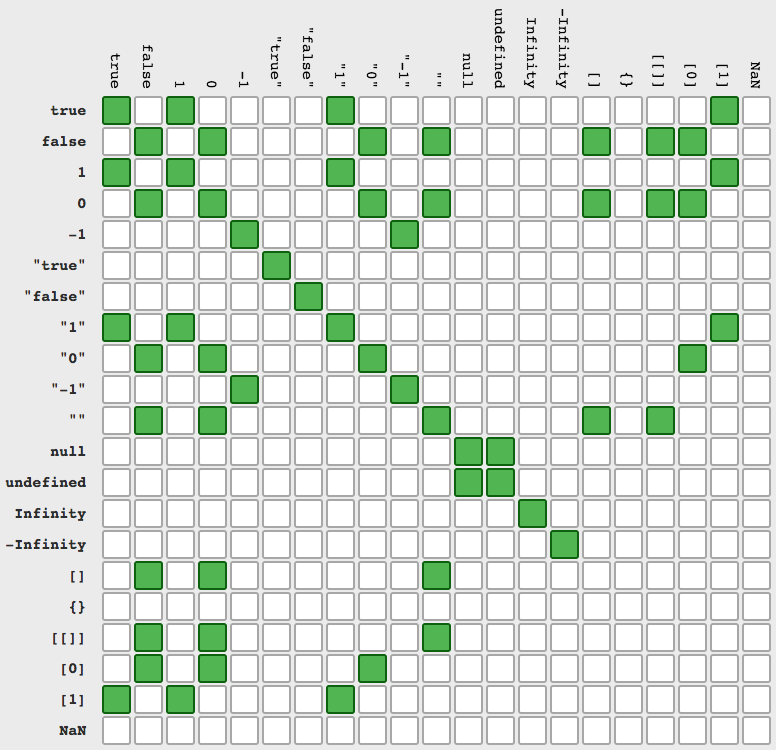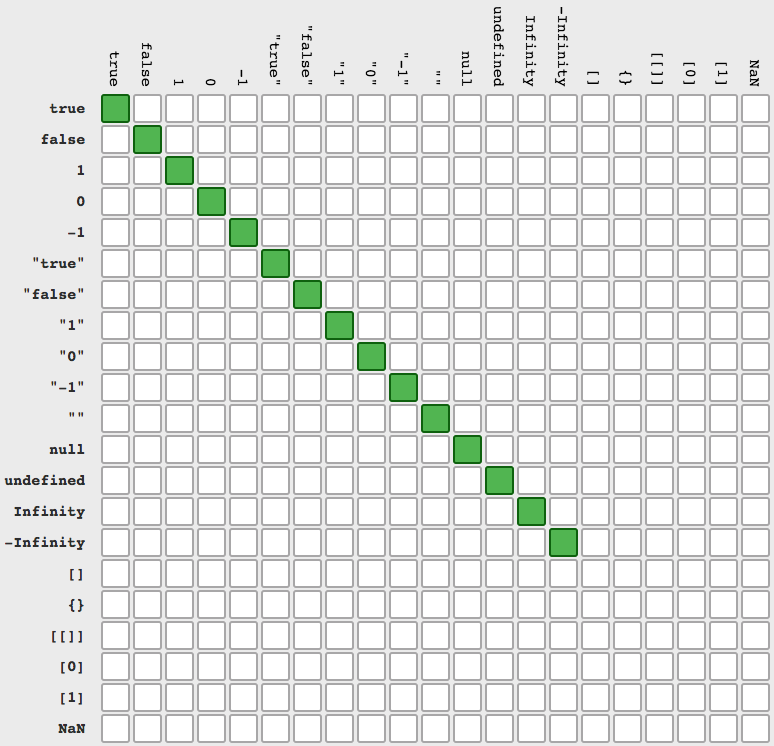Basic Operators and Comparsion
Math Operators
+, addition
-, subtraction
*, multiplication
/, division
%, remainder
**, exponentiationString Operators
The plus symbol if used with Strings will be for concatenation, you join two String together. If any of the operand is a String, the other one is also converted to a String too
Assignments
Assignment statement will do the assignment and return the value that was assigned, just like in Ruby
console.log(x = 5); This will print out 5 because after 5 is being assigned into the variable x, it will return 5 for the console.log() function to print.
Bitwise Operators
- AND = &
- OR = |
- XOR = ^
- NOT = ~
- LEFT SHIFT = <<
- RIGHT SHIFT = >>
- ZERO-FILL RIGHT SHIFT = >>>
== vs ===
The problem with regular equality check is that it does type conversion by default. So you cannot distinguish between say 0 and false since 0 == false result in true. This is because anything besides 0 are considered to be false.
In order to do equality check without type conversion you would use the triple equality operator, which does checks without type conversion.
a === b, will result in false if a and b are different type.
There is also the !== variant compare to !=
Comparison using ==

Comparison using ===
null and undefined
When comparing null and undefined using non-strict check you will see them to be equal to equal other
null == undefined // true
null === undefined // false, to be expectedWhen null is used together with numbers, null is type converted to 0. However, this is only for comparison operator, not equality check!
null > 0 // false
null == 0 // false
null >= 0 // trueHence, you see that null == 0 is false, because the type conversion from null to 0 isn't carried out. The equality check for undefined and null is defined such that without any conversion, they are equal to each other only and equal to nothing else!
When undefined is used together with numbers for comparison operator, it will always be false. This is because undefined gets converted to NaN. And equality check don't work because like mentioned previously undefined only equal to null and nothing else.
Takeaway
- If you are going to compare a variable that might be
undefined/nulltreat it with care - Don't use
>=, >, <, <=if the variable might beundefined/nullhave a separate check to deal with those values.
https://developer.mozilla.org/en-US/docs/Web/JavaScript/Equality_comparisons_and_sameness A nice read up on how the comparison is actually done, if needed for further clarification.


No comments to display
No comments to display